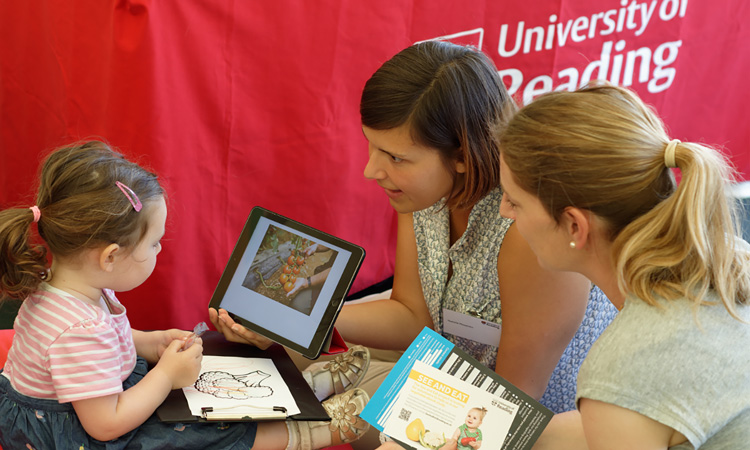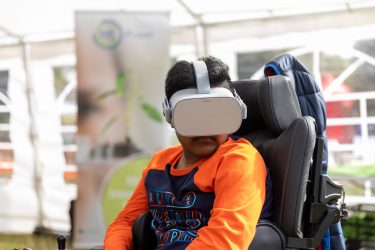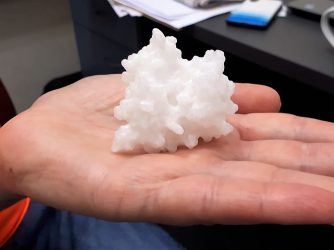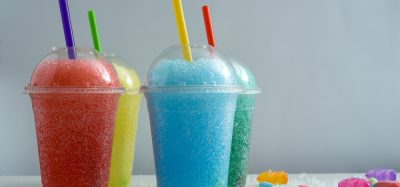Learning to love veg
- Like
- Digg
- Del
- Tumblr
- VKontakte
- Buffer
- Love This
- Odnoklassniki
- Meneame
- Blogger
- Amazon
- Yahoo Mail
- Gmail
- AOL
- Newsvine
- HackerNews
- Evernote
- MySpace
- Mail.ru
- Viadeo
- Line
- Comments
- Yummly
- SMS
- Viber
- Telegram
- Subscribe
- Skype
- Facebook Messenger
- Kakao
- LiveJournal
- Yammer
- Edgar
- Fintel
- Mix
- Instapaper
- Copy Link
Posted: 2 September 2020 | Laura Elphick | No comments yet
Following the link between COVID-19 and obesity, good nutrition has never been more important. Here, Laura Elphick explains the work EIT Food and partners are undertaking to help children understand where their food comes from and encourage them to eat healthy.


Imagining a world where all children have access to a healthy diet that they enjoy, while understanding and appreciating the value of food and where it comes from can seem like an impossible challenge. Rising global obesity levels, an abundance of unhealthy food options and a disconnection from how food reaches our plates are just some examples of this enormous challenge. However, at EIT Food we are tackling many of these issues head on – working to improve the health and sustainability of diets across our communities.
Child obesity
An estimated 38 million children aged under five are classified as overweight or obese, while 216 million school-aged children and adolescents are overweight.1 In just 40 years, the number of school-age children and adolescents with obesity has risen more than 10-fold, from 11 million to 124 million.2


The FutureKitchen project has been teaching children about the value of food through virtual reality
Importantly, an overweight or obese child is more likely to develop a variety of health problems as they grow older, including many non-communicable diseases (NCDs) such as cardiovascular disease and metabolic syndrome diseases (MSDs) like diabetes. To address this, EIT Food is committed to addressing Sustainable Development Goals related to the reduction of NCDs and obesity, particularly in children.3,4
Sugar replacement
Many children consume too much sugar in their diets,5 which is a driver of obesity and other health problems. Reducing sugar in foods is a challenging process however, for example, ensuring that the replacement of calories lost by sugar reduction is not substituted with other calories, such as saturated fats.
EIT Food’s ‘Sugar-Out Prote-In’ project is addressing high rates of MSDs by developing a new, healthy and sustainable sweetening solution for the food and beverage market. The consortium led by Technion faculty of Biotechnology and Food Engineering is creating a zero-glycemic index protein-based sweetening system that can enable sugar reduction across numerous food and beverages.


Amai Proteins is developing novel, sweet proteins using precision fermentation
The project aims to achieve this by using sweet proteins found in exotic fruits. These healthy sweeteners are digested as proteins rather than sugar but have not yet entered the mass food market due to high cost, low stability during shelf life and sensory profile challenges. Startup Amai Proteins is developing the scalable production of novel sweet proteins by precision fermentation to enable mass production. Technion and Amai Proteins are optimising the taste of sweet proteins and improving their shelf life so they can enter the mass food market.
Now more than ever, addressing sugar overconsumption is paramount. Obesity doubles the chance of getting critically ill from COVID-19.6 Therefore, introducing healthy sweet proteins that can reduce sugar levels in numerous products can both revolutionise the global food and beverage market and contribute to the prevention of obesity and other MSDs that increase morbidity and mortality due to COVID.
Low vegetable intake
Another growing concern in children’s diets is low intake of fruit and vegetables. An NHS Digital health survey7 (2018) reported that only 18 percent of children aged between five and 15 had their recommended five portions of fruit and vegetables each day.
EIT Food’s See & Eat project is addressing low vegetable intake in children by increasing food familiarity and liking. Research suggests that picture books can be used to boost foods’ visual familiarity in preschool aged children, increasing their willingness to try and taste vegetables.8 Inspired by this, the See & Eat project, led by the University of Reading, has created a library of 24 e-books which show the farm-to-fork journey of different vegetables.
“One of the key factors in whether young children will accept a food into their diet is how familiar they are with it,” explained Professor Carmel-Houston Price, Activity Leader of See & Eat and Professor of Language and Cognitive Development at the University of Reading. “The best way to increase familiarity is to keep offering children the foods we want them to eat at mealtimes, but for vegetables, we know that familiarity with what the food looks like and where it comes from also helps.”
She noted that lockdown has offered many people the opportunity to find a newfound appreciation of food. “Many families have started trying to grow their own (vegetables) for example. By involving children in the growing, harvesting and preparation of foods, they are likely to be more accepting of them when they arrive on their plate. For families who cannot do this, the See & Eat e-books provide another way to show children where foods come from.” The e-books are free and available at: www.foodunfolded.com.
Valuing food
A British Nutrition Foundation (2017) survey of 5,000 children found that 10 percent did not know carrots grow underground, while 13 percent believed pasta came from an animal, and almost one fifth thought fish fingers are made of chicken.
Engaging children in how their food is produced can be tricky, not to mention encouraging them to want to eat healthy foods. However, one EIT Food project is successfully engaging children through the medium of ‘infotainment’.
EIT Food’s FutureKitchen project is a virtual reality (VR) and infotainment video series that covers a range of topics, including healthy eating, food sustainability and food mindfulness. Through this, young people can learn, for example, how food is grown in harsh climates, how to cook with unusual/new ingredients, and new innovative food technologies to produce their food, such as 3D food printers.
Tackling nutritional challenges such as the childhood obesity crisis requires long term commitment and intervention, and while EIT Food is making progress, more needs to be done. By working together, we can continue to improve the diets of our youngest generations.
References
1. WHO (2018) Taking action on childhood obesity report http://tiny.cc/cnxlsz
2. WHO (2018) Commission on Ending Childhood Obesity http://tiny.cc/hnxlsz
3. UN Sustainable Development Goal – SDG3 – Good Health and Well-Being http://tiny.cc/jnxlsz
4. UN Sustainable Development Goal – SDG2- Zero Hunger http://tiny.cc/nnxlsz
5. Public Health England (2018): Child consumer more than a year’s worth of sugar in six months http://tiny.cc/qnxlsz
6. BMJ (2020) Obesity and covid-19: the role of the food industry http://tiny.cc/snxlsz
7. NHS Digital Healthy Survey (2018): Fruit and Vegetables http://tiny.cc/7nxlsz
8. Owen et al (2018): Peas, please! Food familiarization through picture books helps parents introduce vegetables into pre-schoolers’ diets. Available: doi: 10.1016/j.appet.2018.05.140 pubmed.ncbi.nlm.nih.gov/29807124/
Acknowledgement
The author would like to thank Mercedes Groba, Innovation Programme Manager at EIT Food for her valuable contribution. Mercedes is currently working on the development on EIT Food’s strategy towards the reduction in childhood obesity.
About the author
Laura Elphick is a Communications and Engagement Officer at EIT Food, one of Europe’s leading food innovation initiatives. In her role, she communicates the company’s mission to future proof the food system on a national and European level. She holds a First-Class Bachelor’s Degree in Consumer Behaviour and Marketing and is passionate about promoting a sustainable food environment to consumers. She has written many articles that focus on the importance of innovation and collaboration in driving food system transformation.









